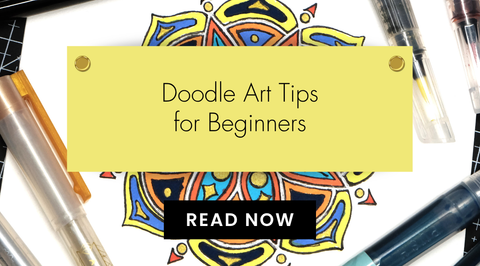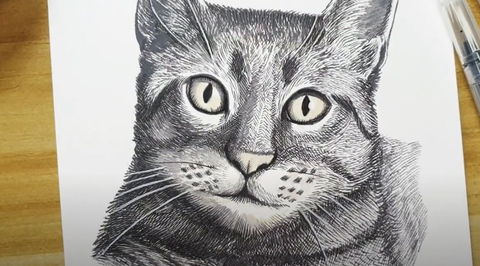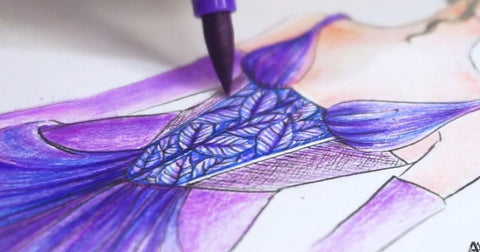7 Techniques for Seamless Alcohol Marker Blending and Color Transitions
Last Updated: August 29, 2025
If you're an artist who loves working with alcohol markers, you know that achieving smooth and seamless color transitions can be quite challenging. Blending alcohol markers requires a good understanding of techniques and some practice to master the art.

In this blog post, we will explore the various techniques for blending alcohol markers to create beautiful and seamless color transitions in your artwork.

What are Alcohol Markers?
Alcohol markers are a popular choice among artists for their vibrant and blendable colors. Unlike water-based markers, alcohol markers use alcohol as a solvent, which allows for smooth blending and layering of colors. They are also known for their quick-drying properties, making them ideal for creating detailed and intricate artwork.

Understanding Alcohol Marker Blending Techniques

1. Choose the Right Paper
The type of paper you use can significantly impact how well your alcohol markers blend. Opt for a smooth, heavyweight paper that is specifically designed for use with alcohol markers. This type of paper prevents the ink from bleeding and allows for better control when blending colors.

2. Start with a Light Hand
When blending alcohol markers, it's essential to start with a light hand. Apply the lighter color first and gradually build up the intensity by layering the darker color. This technique allows for better control over the blending process and helps prevent harsh lines and streaks in your artwork.

3. Use a Colorless Blender
Most alcohol marker sets come with a colorless blender marker, a valuable tool for seamlessly blending colors. The colorless blender marker is used to push the pigments around and soften the edges of the colors, creating a smooth transition between different shades.

4. Experiment with Layering
Layering is a fundamental technique when it comes to blending alcohol markers. Experiment with layering different colors to create new shades and tones. Start with a base color and gradually add layers of other colors to achieve the desired hue. This technique allows for endless possibilities and unique color combinations in your artwork.

5. Practice Gradual Transitions
To achieve seamless color transitions, practice creating gradual transitions between different colors. Start by blending two similar colors together and gradually transition into contrasting colors. This technique requires patience and precision but results in stunning and smooth color gradients.

6. Work in Small Sections
Blending alcohol markers can be overwhelming, especially when working on larger areas. To make the process more manageable, work in small sections at a time. Focus on blending one section before moving on to the next, ensuring that each transition is seamless and well-executed.


7. Embrace the Feathering Technique
Feathering is a technique that involves using quick, light strokes to blend colors together. This technique creates a soft and feathered effect, perfect for creating delicate transitions between different hues. Practice feathering to add depth and dimension to your artwork.


Tips and Tricks for Seamless Alcohol Marker Blending
- Keep your markers capped when not in use to prevent them from drying out.
- Test your colors on a separate sheet of paper before applying them to your artwork to ensure they blend well together.

- Use a light source to determine where the shadows and highlights fall in your artwork, allowing for more realistic blending.
- Experiment with different paper textures to see how they affect the blending process.
- Practice regularly to improve your blending skills and develop your unique style. Here’s a FREE alcohol marker coloring class to help you practice.

Mastering alcohol marker blending techniques takes time and practice, but the results are well worth the effort. By choosing the right paper, experimenting with layering, and practicing various blending techniques, you can achieve seamless color transitions in your artwork. Remember to embrace the process and enjoy the creative journey as you explore the endless possibilities of alcohol marker blending. Find more sketching tips and coloring techniques in The Creative Corner.






